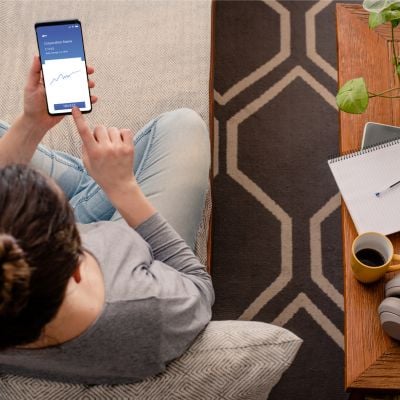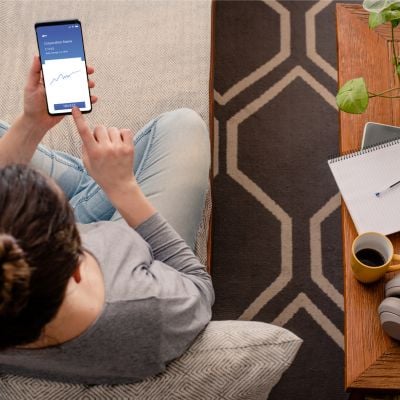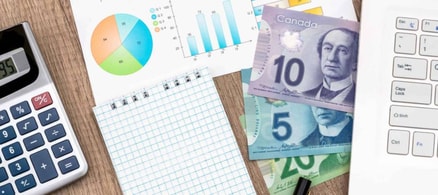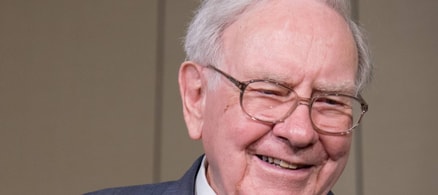Changes to the FHSA
A few minor adjustments have been made to the FHSA since it was first announced. While these changes are small, they can have a major impact on your finances:
- You can now carry over unused FHSA contribution room.
- You can use both the Home Buyers’ Plan along with the FHSA to save for a down payment.
Originally, the yearly $8,000 FHSA contribution limit couldn’t be carried over. However, that’s changed, so any unused contributions can be rolled over to the following year.
For example, if you contributed $5,000 to your FHSA this year, you’d have $11,000 (the yearly $8,000 contribution room + $3,000 unused room) total contribution room next year. It’ll still take you a minimum of five years to reach the maximum contribution room of $40,000, but now you have some flexibility.
The ability to combine both your Home Buyer’s Plan (HBP) with the FHSA is interesting.
With the HBP, you can withdraw up to $35,000 from your RRSP tax free. This is a great incentive for potential homeowners, but you have to repay yourself over 15 years, unlike the FHSA.
When the FHSA legislation was first announced in August 2022, it stated that you had to choose between the two. Even though the FHSA was clearly the better account, it likely wouldn't be able to help those looking to buy soon, because there's a limit on annual contributions.
But when the legislation passed in December, that limitation wasn't included. The Canada Revenue Agency confirmed that a prospective buyer can withdraw from their FHSA and RRSP with the Home Buyers’ Plan.
Now that you can use both, it gives homeowners more options. Anyone looking to buy in the near future could use their HBP and FHSA to maximize their downpayment. Alternatively, if you already have savings in your RRSP, you could focus on contributing to your FHSA. When you’re ready to buy, you will have access to up to $75,000 between the two accounts.
A better online investing experience
Easy to use and powerful, Qtrade's online trading platform puts you in full control with tools and resources that help you make well-informed decisions.
Invest NowFHSA and HBP differences
Since deciding between the FHSA and HBP, or using both, can have a major impact on your home purchase, you’ll want to familiarize yourself quickly with the benefits of each.
How the FHSA works
- $8,000 yearly contribution limit
- Lifetime contribution limit of $40,000
- Contributions are tax deductible
- Capital gains and interest earned are tax-free
- Withdrawals do not have to be repaid
- Accounts must be closed after 15 years
- Capital gains (earnings) and interest are tax-free
How the HBP works
- Can withdraw up to $35,000 from your RRSP tax free
- Contributions must be repaid over 15 years
- Any contributions not repaid will be considered taxable income, and the contribution room will be lost permanently
Your strategy moving forward
If your goal is to buy a home, prioritizing your FHSA over your RRSP is a good idea since it gives you tax benefits on contributions and withdrawals. For every dollar you contribute, your taxable income is reduced by an equal amount. Plus, you don’t need to worry about any repayments.
High-income earners will likely want to focus on their RRSP first since they’ll likely have more contribution space than the FHSA. For reference, your RRSP contribution room is 18% of your previous year’s income, with a cap at $31,560 for 2023 .
For example, if you earned $100,000 last year, you’d have $18,000 in your annual RRSP contribution space. That’s clearly higher than the $8,000 FHSA limit.
That said, if you have the funds available, maxing out both your RRSP and FHSA would help since it’ll lower your taxable income.
Grow Your Savings Effortlessly with Moka
Automate your savings with every purchase and watch your money multiply. Moka rounds up your transactions and invests the spare change. Start building wealth effortlessly today. Join thousands of Canadians embracing financial freedom with Moka
Sign up nowHomebuyers need all the help they can get
The FHSA and RRSP tax benefits are great, but that’s only one part of the equation.
Once FHSAs become available, you’ll need to see what each financial institution is offering. Some may offer a simple savings account, while others may allow you to invest your savings in a variety of investment products, such as mutual funds, stocks, and exchange-traded funds.
Most first-time homebuyers will usually want to buy a property soon. That means they’ll likely want to keep their money safe, and avoid investing their nest egg in high-risk products. Even though any gains made in your FHSA are tax-free, there would be limited growth potential since you’d probably focus on low-risk investments such as Guaranteed Investment Certificates (GICs). That makes the tax-free withdrawal aspect of the FHSA less appealing.
In addition, even though real estate prices across the country have cooled as of late, the national average cost of a home was $626,318 in December 2022. In high cost areas such as Toronto and Vancouver, the average selling price was $1,038,668 and $1,111,400, respectively, in January 2023. Even if you could max out your FHSA and take full advantage of the HBP, you may not even have enough for a down payment you need. However, it’s still an option that can make it a little easier to climb the mountain to homeownership.
Sponsored
Trade Smarter, Today
With CIBC Investor's Edge, kick-start your portfolio with 100 free trades and up to $4,500 cash back.







